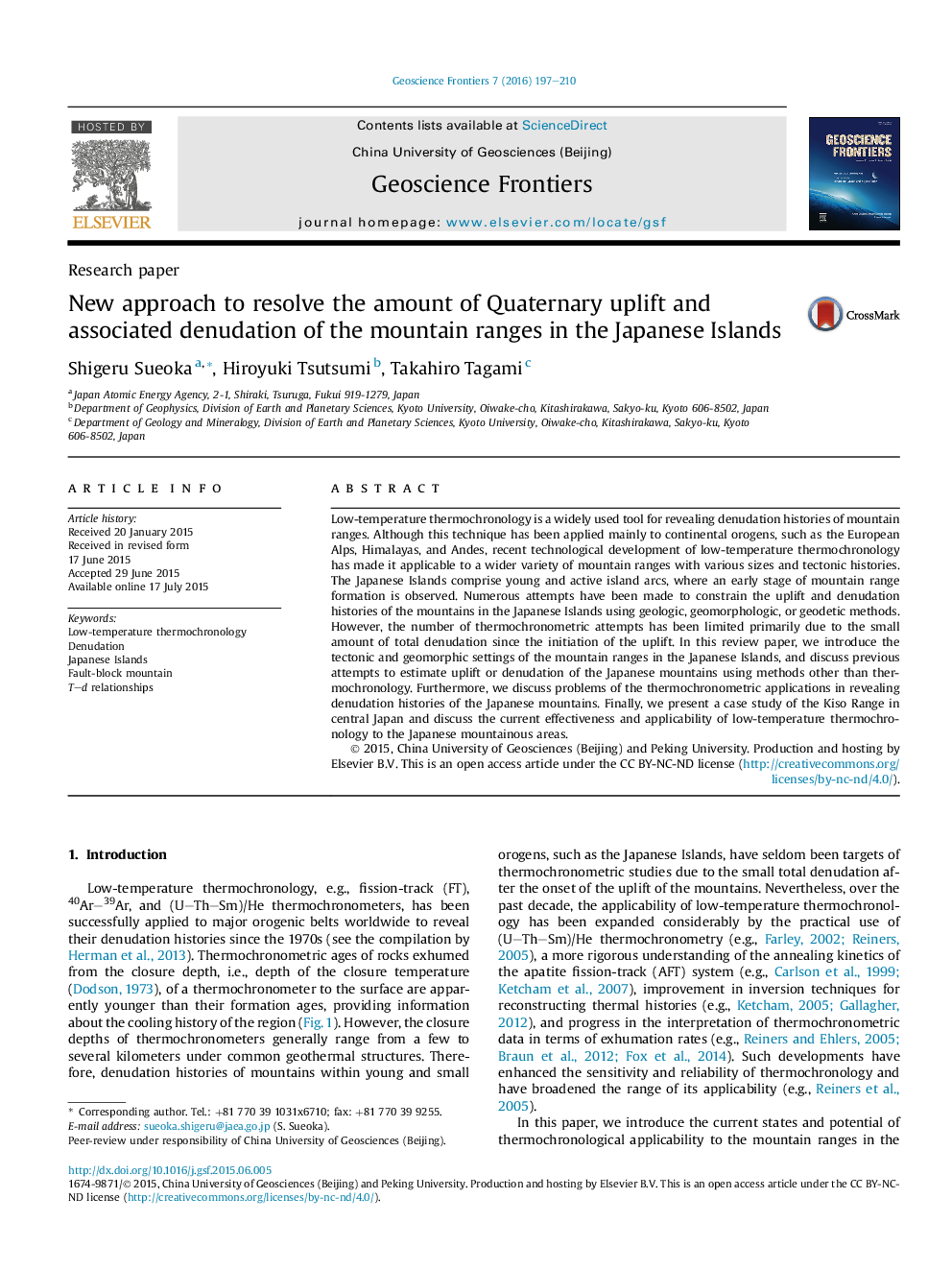| Article ID | Journal | Published Year | Pages | File Type |
|---|---|---|---|---|
| 4681539 | Geoscience Frontiers | 2016 | 14 Pages |
•Thermochronometric applications to the Japanese mountains observed where early stages of mountain building.•Low-temperature thermochronology to constrain cooling/denudation histories of the Japanese mountains.•T–d relationships expanded the applicability of the method in the case study of the Kiso Range, central Japan.
Low-temperature thermochronology is a widely used tool for revealing denudation histories of mountain ranges. Although this technique has been applied mainly to continental orogens, such as the European Alps, Himalayas, and Andes, recent technological development of low-temperature thermochronology has made it applicable to a wider variety of mountain ranges with various sizes and tectonic histories. The Japanese Islands comprise young and active island arcs, where an early stage of mountain range formation is observed. Numerous attempts have been made to constrain the uplift and denudation histories of the mountains in the Japanese Islands using geologic, geomorphologic, or geodetic methods. However, the number of thermochronometric attempts has been limited primarily due to the small amount of total denudation since the initiation of the uplift. In this review paper, we introduce the tectonic and geomorphic settings of the mountain ranges in the Japanese Islands, and discuss previous attempts to estimate uplift or denudation of the Japanese mountains using methods other than thermochronology. Furthermore, we discuss problems of the thermochronometric applications in revealing denudation histories of the Japanese mountains. Finally, we present a case study of the Kiso Range in central Japan and discuss the current effectiveness and applicability of low-temperature thermochronology to the Japanese mountainous areas.
Graphical abstractFigure optionsDownload full-size imageDownload as PowerPoint slide
